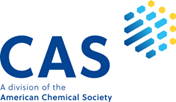The Prevalence and Management of Diabetes Mellitus Among Educated and Uneducated Populations in Pakistan. A comparative study
Diabetes Awareness and Control
DOI:
https://doi.org/10.69750/dmls.01.05.049Keywords:
Diabetes mellitus, prevalence, management, education, glycemic control, awareness, Pakistan, biomarkers, lifestyle modifications, public healthAbstract
Background: Diabetes mellitus (DM) is a growing public health challenge globally, particularly in developing countries like Pakistan. Education plays a crucial role in DM management and awareness.
Objective: The aim of this work was to compare the rate and the treatment of diabetes mellitus (DM) in educated and uneducated people of Pakistan.
Methodology: This comparative study was conducted on 500 participants out of which 300 has been given formal education that is at least secondary education whereas 200 has no formal education that is they have dropped out at least at primary level. Diabetes prevalence, awareness, and management and lifestyle practices data were collected using structured questionnaires and blood glucose measurements. Data analysis was done with SPSS v 25.0, where chi-squared tests and logistic regression were used to assess the relationship of educational status with DM prevalence and its management.
Results: The result showed that DM was higher among the uneducated group which was 32% compare to the educated group which was 18%. The participants who were educated had better understanding of DM, better compliance with the prescribed drug regimen and improved life style changes. On the other hand, the uneducated group had poor disease knowledge and worst management hence poor management of their disease condition.
Conclusion: Education has a great effect on the incidence and control of DM. The study implies that there is a significant lack of knowledge about DM among the uneducated population hence the need to conduct health education to create awareness and ensure proper management of DM.
Downloads
References
Akash MSH, Rehman K, Jabeen K, Fiayyaz F, Sabir S, Haq MEU. Assessment of knowledge, attitude and practice of Pakistani population about diabetes mellitus. J Pak Med Assoc. 2021;71:286.
Abdul Basit K, Fawwad A, Mustafa N, Davey T, Tahir B, Basit A. Changes in prevalence of diabetes, prediabetes and risk factors in rural Baluchistan. PLoS One. 2023;18(4):e0284441. doi:10.1371/journal.pone.0284441
Akhtar S, Nasir JA, Javed A, Saleem M, Sajjad S, Khan M, et al. Prevalence of diabetes in Afghanistan: systematic review and meta-analysis. BMC Public Health. 2021;21:941. doi:10.1186/s12889-021-10993-5
Siddique K, Malik RA, Usman A, Ishfaq K, Nadeem MS, Qadir M, et al. Self-care behaviors and glycemic control among older T2DM patients in low-income families. J Hum Behav Soc Environ. 2022;32(1):67-76. doi:10.1080/10911359.2020.1851843
Basit A, Sabir S, Riaz M, Fawwad A, Abro MUR, Ahmed KI, et al. Dyslipidemia patterns in Pakistan (NDSP 2016–2017). J Diabetes Metab Disord. 2020;19(2):1215-25. doi:10.1007/s40200-020-00631-z
Sana S, Hina S, Junaid R, Zoya F. Sedentary lifestyle as a causal factor of obesity and distress in T2DM. BMJ Public Health. 2023;1(1):e000149. doi:10.1136/bmjph-2023-000149
Bukhsh A, Goh B-H, Zimbudzi E, Lo C, Zoungas S, Chan K-G, et al. T2DM patients’ perspectives and barriers toward self-care. Front Endocrinol. 2020;11:534873. doi:10.3389/fendo.2020.534873
Majeed A, Rehman M, Hussain I, Imran I, Saleem MU, Saeed H, et al. Impact of treatment adherence on quality of life in T2DM. Patient Prefer Adherence. 2021;15:475-81. doi:10.2147/PPA.S295012
Arshad MS, Alqahtani F, Rasool MF. Economic burden of type 2 diabetes in Pakistan. Healthcare (Basel). 2024;12(18):1826. doi:10.3390/healthcare12181826
Moradpour F, Rezaei S, Piroozi B, Moradi G, Moradi Y, Piri N, et al. Prevalence of prediabetes, diabetes, and inequalities in western Iran. Sci Rep. 2022;12:17892. doi:10.1038/s41598-022-22779-9
Sharif H, Jan SS, Sharif S, Seemi T, Naeem H, Jawed Z. Depression and suicidal ideation in T2DM patients of Karachi slums. Front Public Health. 2023;11:1135964. doi:10.3389/fpubh.2023.1135964
Haq MEU, Akash MSH, Sabir S, Mahmood MH, Rehman K. Dietary bisphenol A exposure and diabetes in Pakistan. Environ Sci Pollut Res. 2020;27(21):26262-75. doi:10.1007/s11356-020-09044-0
Moradi F, Ziapour A, Abbas J, Najafi S, Rezaeian S, Faraji O, et al. Lifestyle factors in T2DM vs healthy individuals. Community Health Equity Res Policy. 2023;43(3):293-9. doi:10.1177/0272684X211022158
Khalid N, Ahmad F, Qureshi FM. Diabetes comorbidity in active tuberculosis: case-control study. Pak J Med Sci. 2021;37(3):816-20. doi:10.12669/pjms.37.3.3274
Tabatabaei-Malazy O, Saeedi Moghaddam S, Rezaei N, Sheidaei A, Hajipour MJ, Mahmoudi N, et al. Prevalence of metabolic syndrome in Iran: comparative analysis. PLoS One. 2021;16(3):e0241926. doi:10.1371/journal.pone.0241926
Riaz M, Shah G, Asif M, Shah A, Adhikari K, Abu-Shaheen A. Factors associated with hypertension in Pakistan: systematic review. PLoS One. 2021;16(1):e0246085. doi:10.1371/journal.pone.0246085
Ahmad H, Ahmed Z, Kashif S, Liaqat S, Afreen A. Metabolic syndrome indicators in newly diagnosed T2DM in Pakistan. Nutr Health. 2023;0(0):02601060221144140. doi:10.1177/02601060221144140
Rahman S, Asif A, Iftikhar M, Rizvi A, Hussain A. Self-reported adherence among T2DM patients in Lahore. Esculapio J SIMS. 2023;16(4):22-8. doi:10.51273/esc20.251645
Ashraf S, Afzal M, Yaqoob A, Khan S. Effect of health education on self-care knowledge in gestational diabetes. Ann Punjab Med Coll. 2023;17(1):45-9. doi:10.29054/apmc/2023.1302
Haq Z, Zaidi SUS, Shahid MN, Waseem AB, Tahir I, Munir M, et al. Impact of high BMI on cholesterol and T2DM control. Dev Med Life Sci. 2024;1(1):7-12. doi:10.69750/dmls.01.01.018






















